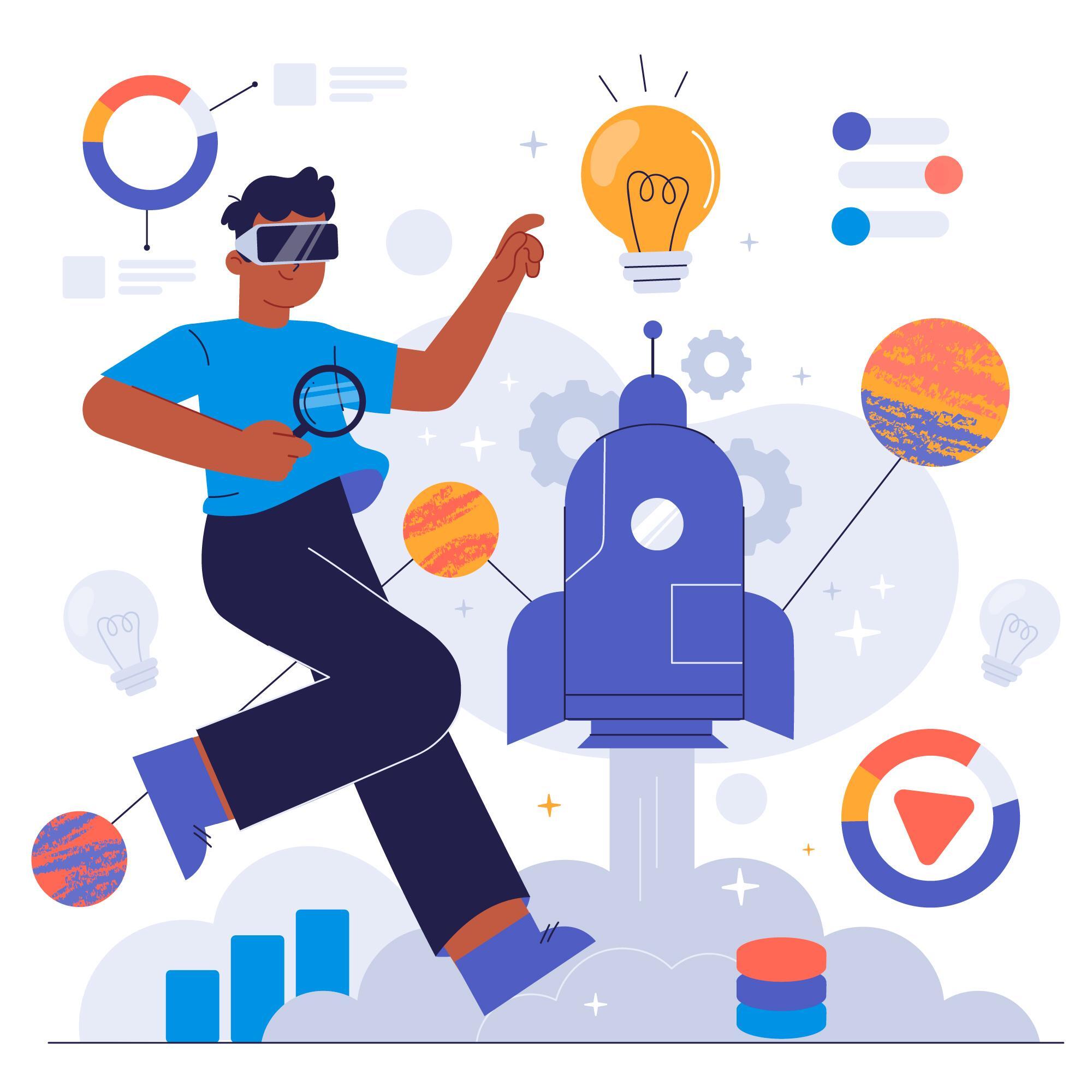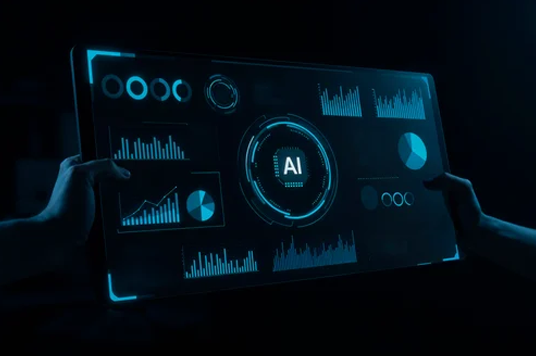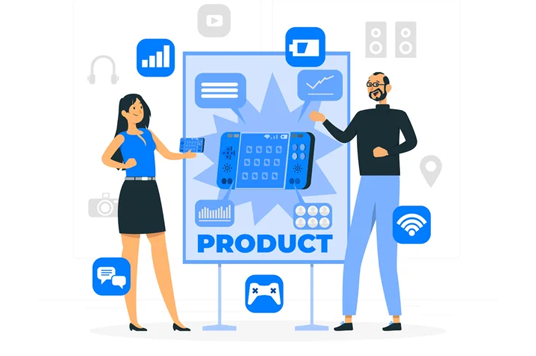In today’s hyper-competitive industrial landscape, manufacturing companies can no longer afford to operate on guesswork, outdated processes, or manual oversight. As industries embrace the Fourth Industrial Revolution, Artificial Intelligence (AI) is becoming a transformative force that helps manufacturers go beyond automation to create intelligent, self-optimizing systems. From smart robotics and predictive maintenance to adaptive supply chains and real-time quality assurance, AI is revolutionizing the way we design, produce, and deliver goods.
For manufacturing companies, the promise of AI is no longer theoretical. Real manufacturers across sectors like automotive, aerospace, electronics, and FMCG are deploying AI to enhance productivity, reduce downtime, and gain operational agility. This blog unpacks how AI is being applied in manufacturing processes today, the real-world use cases showing quantifiable benefits, and how forward-thinking businesses can prepare to integrate AI into their own digital fabric.
We’ll explore the most impactful applications of AI in manufacturing, examine specific industry examples, and offer practical guidance for leaders seeking to future-proof their operations. Whether you’re starting with AI or looking to scale your initiatives, this guide offers the roadmap to transforming your shop floor into a smart factory.
The Role of AI in Modern Manufacturing
Artificial Intelligence is a catalyst for smarter manufacturing environments. It enables real-time decision-making, predictive analytics, and autonomous systems that continuously learn and adapt. The traditional factory model is evolving from rigid assembly lines to interconnected, intelligent ecosystems powered by data and algorithms.
At its core, AI brings together several advanced technologies:
- Machine Learning (ML): These algorithms learn from historical and real-time data to forecast outcomes, optimize operations, and flag anomalies. In manufacturing, ML is used for everything from predictive maintenance to demand forecasting. For instance, a machine learning model can evaluate years of temperature sensor data to anticipate when a motor will overheat, thus preventing downtime.
- Computer Vision: Used for automated inspection and visual quality control. High-resolution cameras and AI models can detect defects faster and more accurately than humans. It helps maintain consistent product quality, especially on fast-paced assembly lines, by scanning hundreds of units per minute and identifying issues without human fatigue.
- Natural Language Processing (NLP): Helps convert unstructured data like maintenance logs or operator notes into actionable insights. NLP tools can analyze technician reports to find recurring issues, flag anomalies, and suggest preventive measures, enabling data-driven maintenance strategies.
- Intelligent Robotics: Cobots (collaborative robots) powered by AI are being used alongside humans for repetitive, precise, or hazardous tasks. These robots can adapt to different tasks, collaborate in confined spaces with humans, and adjust their behavior based on real-time input.
- Digital Twins: A virtual replica of machinery or processes enhanced by AI to simulate, predict, and optimize performance. By continuously feeding operational data into the digital twin, manufacturers can test changes, foresee problems, and optimize machine settings without halting production.
The key benefits of AI in manufacturing include:
- Reduced downtime: By predicting failures before they occur, AI ensures machines operate smoothly. Sensors collect performance data, which AI models analyze to forecast part failures, thus reducing unexpected halts.
- Higher product quality: Through real-time monitoring and intelligent inspection, AI helps ensure consistent output. It minimizes human error and flags even the smallest inconsistencies in manufacturing.
- Improved resource efficiency: AI can analyze production schedules, energy usage, and material consumption to recommend optimizations that save resources and money.
- Faster time-to-market: By accelerating design iterations through digital twins and ML-based simulations, manufacturers can bring new products to market faster.
By leveraging AI, manufacturers aren’t just optimizing production—they’re redefining it.
Key Areas Where AI Optimizes Manufacturing Processes
AI is making significant strides across the manufacturing value chain. From sourcing materials to delivering the final product, AI is helping companies increase precision, reduce waste, and improve outcomes. Let’s look at the core areas where AI is optimizing processes.
Predictive Maintenance
Instead of relying on fixed maintenance schedules or reacting to equipment failures, predictive maintenance uses AI to anticipate issues before they cause breakdowns. By analyzing data from IoT sensors, temperature readings, vibration patterns, and machine logs, AI models can forecast when a component is likely to fail.
- Minimizing unplanned downtime: AI models use real-time sensor data and historical trends to detect deviations in machine behavior. This enables companies to take preventive action before a failure occurs, ensuring smoother operations and avoiding costly delays.
- Extending asset life: By identifying the root causes of wear and tear early, AI helps optimize how equipment is used. For instance, operators can adjust usage patterns or replace vulnerable parts ahead of time, which extends the equipment's life cycle.
- Lower maintenance costs: Preventive measures guided by AI reduce the need for emergency interventions, technician overtime, and expensive express-shipped parts. Maintenance becomes more efficient and cost-effective.
Quality Control with Computer Vision
Ensuring consistent product quality is critical in manufacturing. AI-driven visual inspection systems use high-speed cameras and deep learning models to identify flaws in real-time.
- Real-time defect detection: These systems can detect even the slightest imperfections—such as hairline cracks or color deviations—at scale. As a result, defective products can be removed immediately without disrupting the workflow.
- Standardization of quality checks: AI systems ensure that inspections are based on consistent parameters. Unlike human inspectors, they don’t get tired or distracted, leading to a more standardized and reliable quality assurance process.
- Scalability: AI-based inspection tools can be deployed across multiple lines and locations with little additional training. They are trained once and replicated easily, maintaining uniform standards across the globe.
Demand Forecasting and Inventory Management
One of AI’s most powerful applications in manufacturing is aligning production with market demand. AI models ingest data from sales channels, market trends, weather forecasts, and supply chain dynamics to generate accurate forecasts.
- Improved forecast accuracy: AI uses pattern recognition and time series analysis to identify demand surges, seasonality, and market shifts. It allows manufacturers to respond proactively and make informed decisions.
- Optimized inventory levels: By accurately predicting demand, manufacturers can keep just the right amount of stock. This reduces storage costs, prevents excess inventory, and eliminates the risk of shortages.
- Dynamic pricing and promotions: AI can suggest when to run discounts, adjust pricing, or bundle products based on real-time demand and inventory conditions, maximizing profitability.
Production Scheduling and Process Optimization
Production scheduling is a complex, dynamic challenge that AI is uniquely suited to address. Intelligent systems consider order volume, machine availability, workforce allocation, and supply timelines to generate optimal schedules.
- Increased throughput: AI analyzes constraints and continuously updates production schedules to improve efficiency. It can simulate different scenarios to find the best possible arrangement that meets deadlines and reduces idle time.
- Agility in change management: AI helps manufacturers swiftly adapt to disruptions like delayed supplies or sudden priority shifts. It recalibrates the production plan on the fly, ensuring customer commitments are still met.
- Waste reduction: Optimized scheduling means machines aren’t idling or being overused. Energy, raw material usage, and labor efforts are balanced more effectively, cutting down on operational waste.
Energy Management and Efficiency
Energy costs are a significant overhead in manufacturing. AI helps optimize energy use across equipment, HVAC systems, lighting, and processes by monitoring real-time usage and identifying inefficiencies.
- Automated energy controls: AI systems dynamically adjust lighting, temperature, and machine operations based on real-time usage patterns, occupancy, and shift changes, reducing unnecessary energy consumption.
- Leakage and anomaly detection: AI can instantly detect spikes in energy usage or irregular patterns, which may indicate faults such as equipment malfunction or system leaks, enabling immediate action.
- Sustainability tracking: AI dashboards visualize metrics like carbon emissions, energy consumption, and resource efficiency. Manufacturers can set targets and track sustainability KPIs more effectively.
Supply Chain Optimization
AI enhances visibility and decision-making in supply chains through predictive analytics, real-time tracking, and dynamic re-routing.
- Risk forecasting: By analyzing external data—like political events, weather forecasts, and supplier performance—AI identifies potential risks to the supply chain and helps businesses mitigate them in advance.
- Logistics efficiency: AI algorithms optimize delivery routes and fleet schedules to minimize delays and fuel consumption. This leads to faster deliveries and lower logistics costs.
- Supplier performance analysis: AI continuously evaluates supplier metrics such as delivery timelines, defect rates, and responsiveness, helping manufacturers build a more reliable and responsive vendor base.
Human-Robot Collaboration
Collaborative robots (cobots) are designed to work safely alongside humans, powered by AI to interpret context, learn from tasks, and adapt in real time.
- Enhanced worker safety: Cobots can take over dangerous or physically strenuous tasks such as lifting heavy parts or working with toxic materials. This reduces workplace injuries and improves morale.
- Flexible task execution: AI-powered cobots can switch between different tasks with minimal programming. This enables manufacturers to respond faster to changes in product design or customer orders.
- Increased productivity: Cobots work tirelessly, with consistent speed and accuracy. When paired with human decision-making, they form highly efficient teams that improve overall throughput.
Real Use Cases of AI in Manufacturing
Numerous global manufacturers are already reaping the benefits of AI-driven transformation. These real-world examples offer a blueprint for companies looking to follow suit.
Siemens
Siemens has embedded AI into its Amberg Electronics Plant in Germany, which manufactures over 1,000 different product types. With over 75% automation, AI systems predict machine failures, dynamically optimize production workflows, and analyze over 50 million data points daily to improve efficiency. This has resulted in a near-perfect product quality rate of over 99.99%.
General Electric (GE)
GE uses AI-powered digital twins to simulate the performance of complex industrial machines like jet engines and gas turbines. These virtual replicas are continuously updated with sensor data, allowing for real-time performance monitoring and predictive maintenance. GE reports millions in cost savings annually due to extended machine life and reduced unplanned downtime.
BMW
At BMW’s factories, AI is used in their Quality Next initiative. High-definition cameras scan car bodies for paint imperfections and fitment issues. These images are analyzed in real-time using deep learning algorithms. The system has significantly reduced inspection time and improved the consistency of vehicle quality across multiple plants.
Foxconn
As one of the world’s largest electronics manufacturers, Foxconn uses AI-powered robots to automate tasks such as component placement, soldering, and product packaging. These systems learn and adapt over time, improving accuracy and reducing defects. AI also helps manage their vast supply chain, identifying optimal routing paths and forecasting demand spikes.
Unilever
Unilever leverages AI to forecast product demand across multiple regions, factoring in seasonal changes, weather patterns, and retail promotions. This data is used to adjust production schedules and optimize inventory levels. By integrating AI into their supply chain planning, Unilever has achieved significant reductions in waste and improved product availability.
These success stories prove that AI isn’t just for tech giants. Mid-sized manufacturers with the right strategy and technology partners can implement AI effectively and see substantial ROI.
Implementation Challenges and How to Overcome Them
While AI offers immense potential, manufacturers must navigate certain challenges to unlock its full value. Understanding these barriers is key to successful implementation.
- Data readiness: Many manufacturers struggle with fragmented or poor-quality data. Centralizing data into a single platform and cleaning legacy datasets ensures AI has quality inputs to work with.
- Change management: Resistance from employees is common. Building internal awareness, offering training, and highlighting success stories can help teams embrace AI as a productivity enabler, not a threat.
- ROI uncertainty: It can be hard to justify AI spend without immediate payback. Starting with small, high-impact pilots helps demonstrate quick wins and builds a case for broader investment.
- Legacy systems: Older systems often lack APIs or data interoperability. Manufacturers can start with modular AI tools that work alongside existing infrastructure, gradually phasing in broader integration.
- Talent scarcity: Building an internal AI team can be time-consuming. Strategic partnerships with digital engineering firms can provide access to ready-to-go AI expertise and reduce time-to-market.
By proactively addressing these challenges, manufacturers can streamline adoption and build scalable AI capabilities.
Getting Started: AI Roadmap for Manufacturers
To adopt AI strategically, manufacturers should follow a phased roadmap that aligns with their operational and business goals. Rushing into AI without a clear plan often leads to disjointed efforts and wasted resources.
- Assess AI maturity: Start with a clear assessment of your current infrastructure, data health, and digital capabilities. This will identify gaps and determine how ready your organization is for AI.
- Identify high-impact use cases: Pinpoint 1-2 areas where AI can deliver measurable value quickly—such as reducing downtime or improving quality control. Focused pilots ensure high ROI and manageable risk.
- Build or partner for AI expertise: Evaluate whether to grow an in-house team or work with a specialist partner. External partners bring experience and scalability, while in-house teams provide domain knowledge.
- Create a scalable architecture: Choose technologies that allow for easy data integration, flexible deployment (cloud, on-prem, hybrid), and AI model reuse across functions and plants.
- Start small and scale: Implement pilot projects, track performance metrics, and refine the approach. Use lessons learned to scale successful models across the enterprise.
This structured approach ensures that AI adoption is sustainable, value-driven, and aligned with broader digital transformation goals.
Future of AI in Manufacturing
The future of manufacturing will be shaped by even deeper AI integration. As algorithms become more powerful and data ecosystems more connected, we’ll see manufacturing operations that are self-correcting, autonomous, and predictive.
- Autonomous factories: Fully AI-driven plants will make real-time decisions without human intervention. Machines will communicate with each other, adapting to demand fluctuations and process variations seamlessly.
- AI + Edge + IoT convergence: Edge computing allows AI models to run directly on manufacturing equipment, enabling immediate responses to changes. Combined with IoT, it ensures fast, localized, and context-aware decision-making.
- Mass customization: AI will enable factories to produce highly customized products in small batches without additional costs or delays. This opens doors to hyper-personalized manufacturing at scale.
- Green manufacturing: AI helps track and reduce emissions, improve resource efficiency, and ensure compliance with environmental standards. It supports long-term sustainability goals across the value chain.
- Human-centric AI: The focus will shift from replacing humans to augmenting them. AI will provide tools and insights that enhance human decision-making, reduce cognitive load, and increase job satisfaction.
Manufacturers that invest today in building AI capabilities will be tomorrow’s leaders in efficiency, innovation, and resilience.
Unlock the Power of AI with Classic Informatics
AI is no longer a futuristic concept—it’s an operational reality that’s transforming every stage of the manufacturing value chain. From predictive maintenance and energy optimization to supply chain intelligence and cobot collaboration, AI is enabling manufacturers to become smarter, faster, and more resilient. But realizing these benefits requires a structured approach, the right partnerships, and a strong digital foundation.
At Classic Informatics, we help mid-to-large enterprises unlock the true potential of AI in their manufacturing operations. Whether you’re starting with a single AI use case or looking to scale across your global plants, our digital engineering and AI teams bring the strategy, technology, and execution support you need.
Ready to elevate your manufacturing operations with AI? 





















